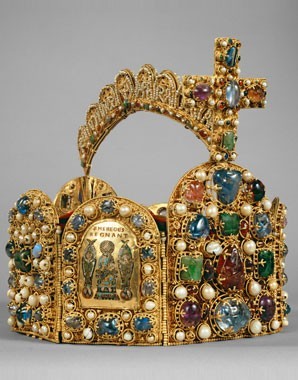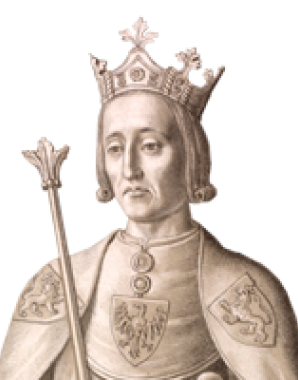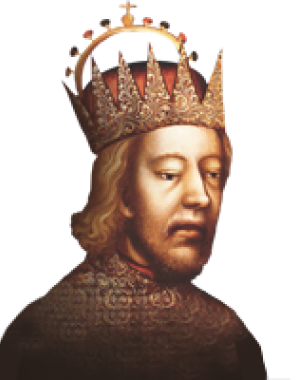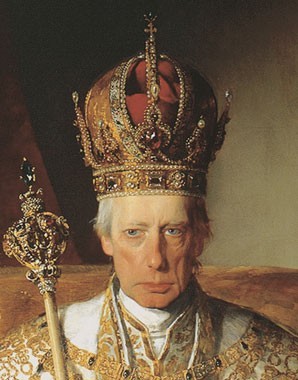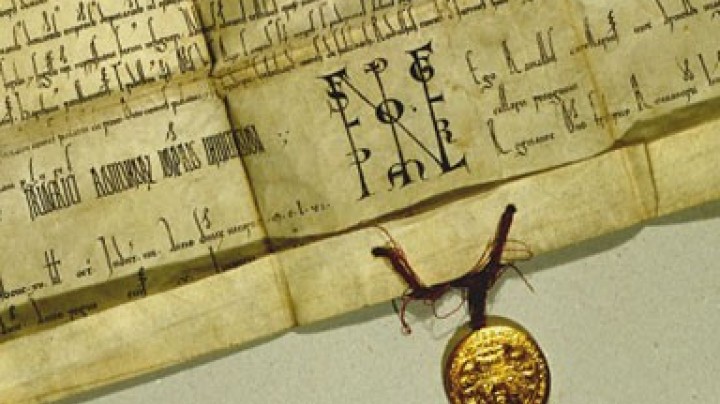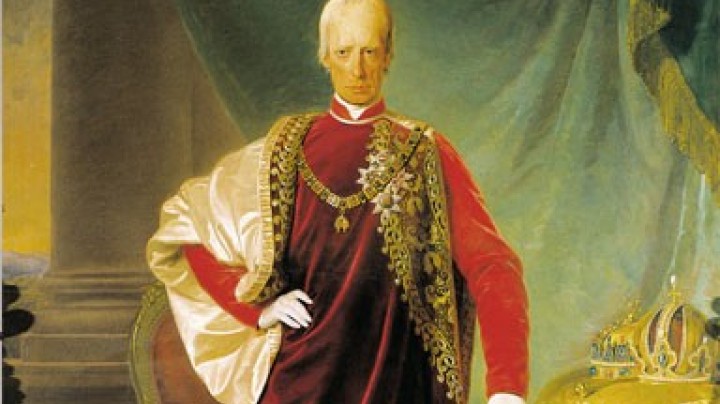The House of Austria – the Habsburgs and the Empire
The first Habsburg on the throne of the Holy Roman Empire, Rudolf I, had already endeavoured to retain the crown for his family and found a ruling dynasty. Nevertheless, several attempts were necessary before the Swabian counts could transform themselves into the Austrian imperial dynasty.
The newly acquired Austrian lands were intended to serve as a geopolitical basis for a permanent linkage of the crown to the House of Habsburg. However, the continuation of this plan was thwarted by the murder of Albrecht I, the energetic and able son and successor of Rudolf as overlord of the realm. Rudolf’s grandson, Frederick the Fair, was no longer able to assert himself against his rivals for the imperial crown.
The empire was shaped in the fourteenth century by the dominant position of the House of Luxembourg. The Habsburg family’s imperial ambitions experienced a further setback when they were excluded from the circle of electoral princes in the Golden Bull of Emperor Charles IV of the House of Luxembourg. Duke Rudolf IV tried to compensate for this by forging documents and insisting – at first unsuccessfully – on the title of Archduke of Austria.
It took over a hundred years, until Duke Albrecht V, for a Habsburg to assume sovereignty in the empire once again: Albrecht, as King Albrecht II, furthermore assumed the crowns of Bohemia and Hungary, the Luxembourg inheritance of his father-in-law Emperor Siegmund. However, before he was able to exploit the potential of this constellation he died prematurely in 1439, only a year after his coronation.
Despite all setbacks, among them the renunciation of his claim to Bohemia and Hungary, his successor Frederick III from the Styrian line of the Habsburgs succeeded in securing the imperial crown for himself. From then on the crown was to remain in the House of Habsburg until the end of the empire in 1806 (with the exception of the period 1740 to 1745). Subsequently the concerns of the empire increasingly overlapped with Habsburg dynastic power politics. Although the Holy Roman Empire was an elective monarchy (the electors continued to elect the emperor), we can de facto observe a certain element of heredity in the imperial title in the House of Habsburg: for instance, the Habsburgs saw to it that their successors were elected and crowned while still alive (‘vivente imperatore’). Under the title of ‘Roman King’ a successor automatically assumed power after the death of the emperor without having to stand in a new election.
Habsburg imperial politics were always based on the Austrian patrimonial lands, the basis of Habsburg dynastic power. The dynasty had increasingly identified itself since the fourteenth century with these lands, so it was now referred to as ‘Haus Österreich’ – the ‘House of Austria’ (Latin ‘Domus Austriae’). This was also an attempt to safeguard the unity of the House in the face of the numerous different branches within the dynasty. Even after the Habsburgs had risen to become a European great power after 1500, their connection with their Austrian roots remained, as demonstrated by the fact that the Spanish Habsburgs were generally designated as the ‘Casa d’Austria’.
As the impossibility of achieving universal imperial power in the empire in the sixteenth century became more and more obvious, the focus of Habsburg politics shifted to efforts to unify the territories ruled by the dynasty – with all their various legal and constitutional traditions – under the overall regency of the Habsburg monarchy. The ‘patchwork state’ of the Monarchia Austriaca emerged by stages from the empire, a development that finally found its culmination in the founding of the Empire of Austria in 1804.





